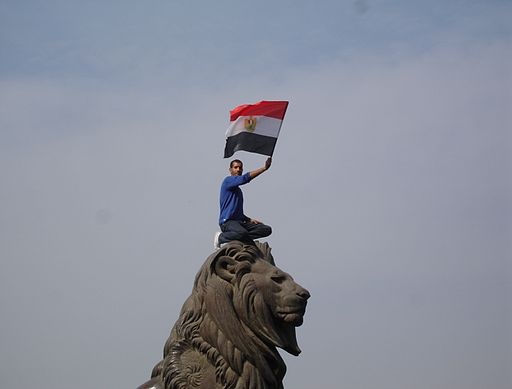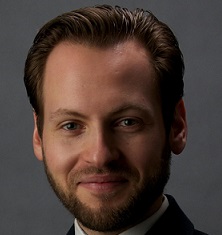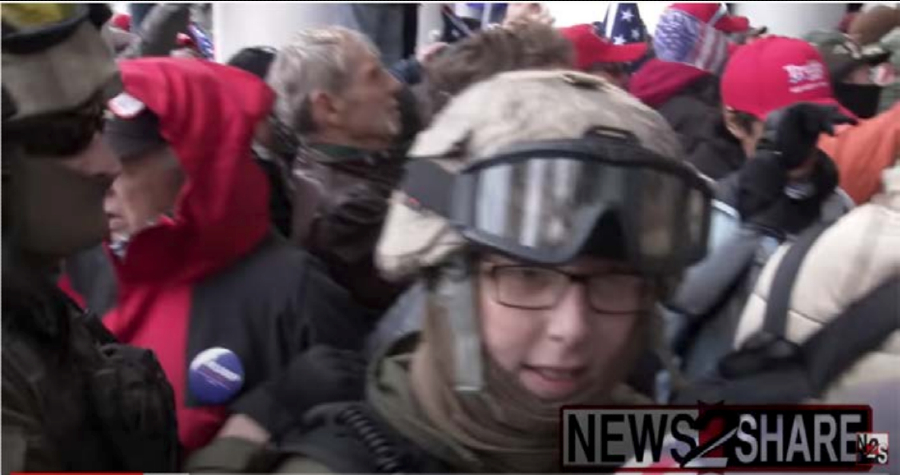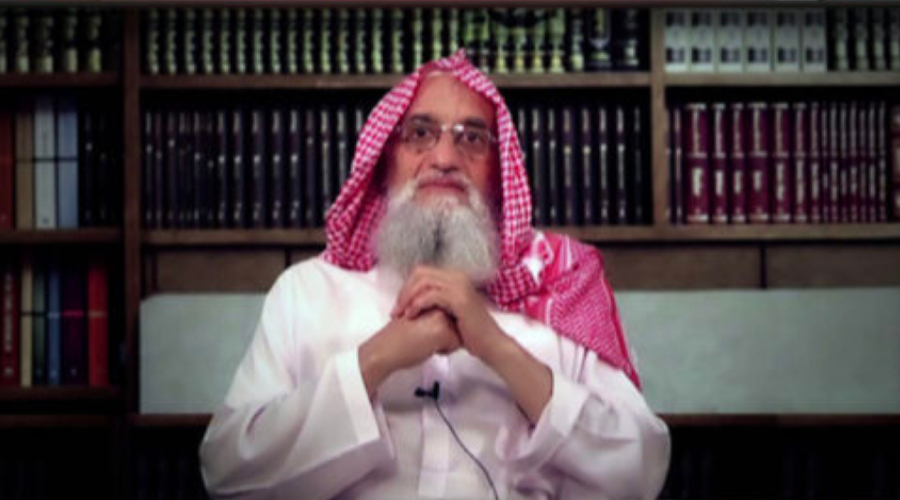Fall of the Brotherhood, Rise of the Salafis
Editor's Note: The 2013 coup in Egypt did not, as the story so often goes in the West, lead to the end of the Islamist role in Egyptian politics. Rather, it led the new regime to crack down on the Muslim Brotherhood but accommodate a Salafi role in politics. Indeed, throughout the Middle East the Salafis have emerged as a potent political force, represented not only by radical groups like the Islamic State but also by a range of peaceful political and social organizations.

Published by The Lawfare Institute
in Cooperation With

Editor's Note: The 2013 coup in Egypt did not, as the story so often goes in the West, lead to the end of the Islamist role in Egyptian politics. Rather, it led the new regime to crack down on the Muslim Brotherhood but accommodate a Salafi role in politics. Indeed, throughout the Middle East the Salafis have emerged as a potent political force, represented not only by radical groups like the Islamic State but also by a range of peaceful political and social organizations. Jacob Olidort, a scholar of Islam now at the Washington Institute for Near East Policy, unpacks these dynamics, explaining why Brotherhood-type organizations are more stagnant while the Salafis seem a more vibrant force.
***
October 17, Egypt enters its first election cycle since the 2013 ouster of President Mohammed Morsi, the Muslim Brotherhood’s candidate, in a coup. Shortly after Morsi’s exit came the formal abolition of the Brotherhood party in Egypt. The only religious party that has officially registered to compete in the elections is the Salafi Nour party.
Salafis and the Brotherhood’s more traditional Islamists are two distinct groups with distinct aims. The former seek to isolate what they perceive to be a “pure” version of the faith purportedly practiced by the earliest Muslims. The latter seek to integrate Islam into the state and other institutions of influence, and may be likened to a political lobby group. Rather than trying to influence government as Islamists tend to do, Salafis instead seek to influence other Muslims whom they dismiss as “deviant” for having sullied the “pure” faith by mixing it with other institutions and ideas that appeared after the period of the “pious predecessors” (7th-9th centuries) and which they thus consider un-Islamic.
Regardless of how Salafis fare in the election, their participation marks the first time that Salafis have upstaged more traditional Islamists in the parliamentary arena – and in Egypt, the very birthplace of the Brotherhood, no less. While, of course, the Salafi parties imitate Islamist tactics, their aims and rhetoric are fundamentally distinct. Moreover, the Egyptian case could be one example of a possible trend of Salafi ascent across the region (another manifestation of this trend is the rise of the Islamic State). To be sure, on a local level traditional Islamist groups continue to hold power – Hamas in Gaza, the AKP in Turkey, Nahda in Tunisia, to list a few famous examples. However, the Brotherhood is no longer the region’s loudest Islamic voice in politics; rather, it is that of their Sunni rivals, the theologically- and legally-oriented Salafis.
A comparison of the rhetoric, actions, and outreach styles of the Muslim Brotherhood’s Islamists and the Salafis over the last five years provides insight into why this reversal of fortunes has occurred.
Fall of the Brotherhood: Old styles in new settings
Rhetoric. The Arab Uprisings gave rise to two increasingly powerful and vocal groups that have made the Brotherhood’s accommodationist rhetoric that Islam is compatible with modern sensibilities less relevant: the hardliners, such as Islamic State supporters, who look to more concrete religious identities and make the Brotherhood seem inauthentic by comparison; and the secularists, who now have the ability to express themselves outside of religious categories altogether.
Actions. The religious ideology and credentials of the Brotherhood played a much smaller role in their initial success during the early days of the Arab Uprisings than did their prolific social services activities and their decades-old reputation for being the region’s main voice of opposition. With the exception of Tunisia, which has perhaps gone the farthest in establishing viable democratic institutions and processes, Islamists in power elsewhere have in the last five years retained the levers of government by centralizing rule through military institutions and repressing all forms of opposition – essentially imitating the methods of the authoritarian regimes they replaced. Not only has this record in power led to the marginalization of Islamist groups by regimes that replaced them, as with President Sissi’s abolition of the Muslim Brotherhood, it has also cast doubt on their credibility as representatives of the people’s interests.
“Islamists in power elsewhere have in the last five years retained the levers of government by centralizing rule through military institutions and repressing all forms of opposition – essentially imitating the methods of the authoritarian regimes they replaced.”
Social Media Use. Brotherhood-type groups use social media outlets principally to express the causes of the group and its leadership rather than to promote less politically-charged subjects such as theology and personal piety. There are two possibly related aspects to this reliance on social media for political causes rather than religious teaching: first, the challenge of rebranding themselves as anything other than political groups, given their pre-Arab Uprisings legacy of political activism; second, their more recent repression by non-Islamist governments precisely because of this reputation. Thus it makes sense that such groups continue to prioritize making the public aware of their plight over seeking to engage with prospective followers on other issues.
Season of the Salafis: A pragmatic purism
Rhetoric. Although the core theological tenets of Salafism are well known, as is the reputation of the Salafis’ commitment to them, non-violent Salafis are as yet an unknown commodity in the political arena. The fact that they are entering as a theological rather than a political movement means that, with the exception of jihadi groups, their political platforms lack consistency. This has to do with the fact that for much of the 20th century, Salafi rhetoric has been legal and theological rather than political in nature, focusing on the “purification” of the sources of Islamic law rather than on its application by local governments.
Thus, to understand the appeal of Salafi rhetoric, political resonance may be the wrong place to look. Indeed, both jihadis and non-violent Salafis address audiences who see their world through the lens of prophetic guidance rather than political institutions. When looking beyond direct threats to Western targets and interests, the rhetorical space in which Salafis of all kinds are winning supporters is principally defined by an ability to make the prophetic prism relevant to all aspects of reality (a task typically accomplished by those most well-versed in the texts) rather than the more tactical skills of either planning political platforms or terrorist attacks. This emphasis on prophetic guidance rather than political change gives Salafis an advantage over the Muslim Brotherhood, given the mercurial political conditions and the greater rhetorical flexibility and religious grounding that Salafis have for their views.
“For much of the 20th century, Salafi rhetoric has been legal and theological rather than political in nature, focusing on the “purification” of the sources of Islamic law rather than on its application by local governments.”
Actions. Whereas traditional Islamists such as the Muslim Brotherhood have clear records as hierarchical political organizations that oversaw a range of social services, Salafis have typically moved in more amorphous study circles preoccupied with lectures and publishing (owing to their aforementioned interest in “purifying” the understanding of the faith). Thus, unlike traditional Islamists, Salafi formation of political parties has been the exception rather than the rule. Since the main theaters of Salafi activity have for decades been these scholarly settings, it is there, rather than exclusively at the ballot boxes, that Salafis contend for influence among followers. In short, unlike traditional Islamists who, by design and in desire, seek direct political power, Salafis have many more channels of activity and influence outside of the parliamentary sphere.
Social Media Use. Salafis in both the parliamentary arena and outside it who opine on political matters use all forms of communication, especially social media platforms, as spaces for indoctrination rather than for promoting any specific political platform. Moreover, with the stigma attached to Salafis because of their ideological links to groups like al-Qaida and the Islamic State, the principal aim of indoctrination is to undo this negative image and to project the image of Salafis as part of local society. Thus, while relatively few Salafis are in the political sphere (and so most Salafis tend not to discuss political platforms), all Salafis are currently competing to project the most winning ideological posture. The net result is a new kind of hybrid politico-educational messaging pattern in which traditionally Islamic themes are presented as reflective of both Salafi doctrines and the interests of the broader voting base. In the long term, therefore, where political messages could lose relevance in new settings, the Salafi emphasis on doctrines could sustain their attraction among more ideologically-committed followers.
Among Salafis, one would typically see themes that include promoting “justice” (‘adāla), combatting “tyranny” (ẓulm), “community” (umma), “rule of law” (which, strategically, Salafis refer to with the ambiguous sharī‘a). These are terms that can also be found in the traditional Islamic lexicon (and so do not betray the Salafi commitment to doctrinal purism) but at the same time can very well reflect the interests of the masses. Contrast these with the Brotherhood promotion of “democracy,” “freedom” and constitutions – all terms that do not exist in traditional Islamic teaching, and whose depiction as Islamic appears to hardliners as mere political sloganeering.
Conclusion
The unprecedented political opening produced by the Arab Uprisings, the spread of chaos in many countries, the return of dictatorship in places like Egypt, and the simultaneous popularity of social media have created a new political landscape in the Middle East in which Salafis decidedly hold the upper hand at a regional, if not at a local, level. Looking at the Brotherhood side of the ledger, the regional failure of the Brotherhood has to do with poor records of governance, as well as an inability to escape their political reputations and structures. By contrast, on the Salafi side, one sees amorphous communities united by a shared dedication to prophetic guidance rather than political platforms. Whereas Brotherhood groups are typically characterized by a hierarchical structure of leadership and exclusive membership, Salafi communities take the shape of meritocratic networks that privilege mastery of religious doctrines over political sloganeering.
The new political environment in which Brotherhood-oriented parties are on the defensive combined with new channels of communication that give audience and access to anyone with the ability and interest to propagate religious teachings both work in the Salafis’ favor. Going forward, regardless of the fate of the Nour Party, any Salafi successes within these fluid settings will depend on their ability to continue their educational messaging and, in the political arena, to ensure that their political messaging balances general Islamic themes with the interests of the broader voting base.
***
All statements of fact, opinion, or analysis expressed are those of the author and do not reflect the official positions or views of the U.S. Government.





